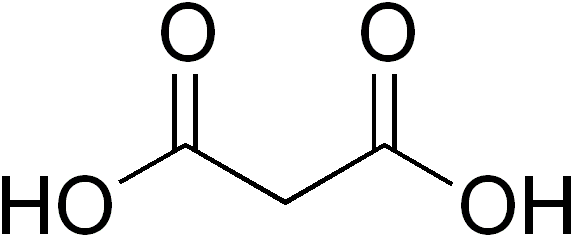|
Thapsic Acid
Thapsic acid (hexadecanedioic acid) is a naturally occurring dicarboxylic acid with the formula C16H30O4. The name is derived from ''Thapsia'', the Latin name for a Mediterranean perennial whose roots contain thapsic acid. It has a role as a human metabolite.Pettersen JE, Aas M. Subcellular localization of hexadecanedioic acid activation in human liver. J Lipid Res. 1974 Nov;15(6):551–556. It is the conjugate acid A conjugate acid, within the Brønsted–Lowry acid–base theory, is a chemical compound formed when an acid gives a proton () to a base—in other words, it is a base with a hydrogen ion added to it, as it loses a hydrogen ion in the rever ... of hexadecanedioate. References Dicarboxylic acids {{OrganicAcid-stub ... [...More Info...] [...Related Items...] OR: [Wikipedia] [Google] [Baidu] |
Thapsia Villosa - 06052010
''Thapsia'' is the scientific name of two genera of organisms and may refer to: * ''Thapsia'' (gastropod), a genus of snails in the family Rissoidae * ''Thapsia'' (plant), a genus of plants in the family Apiaceae {{Genus disambiguation ... [...More Info...] [...Related Items...] OR: [Wikipedia] [Google] [Baidu] |
Dicarboxylic Acid
In organic chemistry, a dicarboxylic acid is an organic compound containing two carboxyl groups (). The general molecular formula for dicarboxylic acids can be written as , where R can be aliphatic or aromatic.Boy Cornils, Peter Lappe "Dicarboxylic Acids, Aliphatic" in Ullmann's Encyclopedia of Industrial Chemistry 2014, Wiley-VCH, Weinheim. In general, dicarboxylic acids show similar chemical behavior and reactivity to monocarboxylic acids. Dicarboxylic acids are usually colorless solids. A wide variety of dicarboxylic acids are used in industry. Adipic acid, for example, is a precursor to certain kinds of nylon. A wide variety of dicarboxylic acids are found in nature. Aspartic acid and glutamic acid are two amino acids found in all life. Succinic and fumaric acids are essential for metabolism. A large inventory of derivatives are known including many mono- and diesters, amides, etc. Partial list of saturated dicarboxylic acids Some common or illustrative examples : ... [...More Info...] [...Related Items...] OR: [Wikipedia] [Google] [Baidu] |
Springer Science & Business Media
Springer Science+Business Media, commonly known as Springer, is a German multinational publishing company of books, e-books and peer-reviewed journals in science, humanities, technical and medical (STM) publishing. Originally founded in 1842 in Berlin, it expanded internationally in the 1960s, and through mergers in the 1990s and a sale to venture capitalists it fused with Wolters Kluwer and eventually became part of Springer Nature in 2015. Springer has major offices in Berlin, Heidelberg, Dordrecht, and New York City. History Julius Springer founded Springer-Verlag in Berlin in 1842 and his son Ferdinand Springer grew it from a small firm of 4 employees into Germany's then second-largest academic publisher with 65 staff in 1872.Chronology ". Springer Science+Business Media. In 1964, Springer expanded its business internationally, ... [...More Info...] [...Related Items...] OR: [Wikipedia] [Google] [Baidu] |
Thapsia (plant)
''Thapsia'', commonly known as the deadly carrots, is a small genus of poisonous plants in the family Apiaceae. Their center of diversity is around the western Mediterranean, extending into the Atlantic coasts of Portugal and Morocco. Some species are used in traditional medicine. Description Species of ''Thapsia'' are herbaceous perennials, growing 50 to 200 cm high. The inflorescences are large, regularly distributed umbels. The seeds have four wings, and are the main characteristic of the genus, which is distributed in the Mediterranean, on the Iberian peninsula, and North Africa. The generic name ''Thapsia'' is derived from the Ancient Greek name θαψία (''thapsía'') for the members of the genus. The Greeks believe it to have originated from ancient Thapsos in Sicily. It has a long history of being used in ancient traditional medicine. Algerians used it as a pain-reliever though they recognized that the plant was deadly to camels. The Greek colony of Cyrene ... [...More Info...] [...Related Items...] OR: [Wikipedia] [Google] [Baidu] |
Conjugate Acid
A conjugate acid, within the Brønsted–Lowry acid–base theory, is a chemical compound formed when an acid gives a proton () to a base—in other words, it is a base with a hydrogen ion added to it, as it loses a hydrogen ion in the reverse reaction. On the other hand, a conjugate base is what remains after an acid has donated a proton during a chemical reaction. Hence, a conjugate base is a substance formed by the removal of a proton from an acid, as it can gain a hydrogen ion in the reverse reaction. Because some acids can give multiple protons, the conjugate base of an acid may itself be acidic. In summary, this can be represented as the following chemical reaction: \text + \text \; \ce \; \text + \text Johannes Nicolaus Brønsted and Martin Lowry introduced the Brønsted–Lowry theory, which said that any compound that can give a proton to another compound is an acid, and the compound that receives the proton is a base. A proton is a subatomic particle in the n ... [...More Info...] [...Related Items...] OR: [Wikipedia] [Google] [Baidu] |

